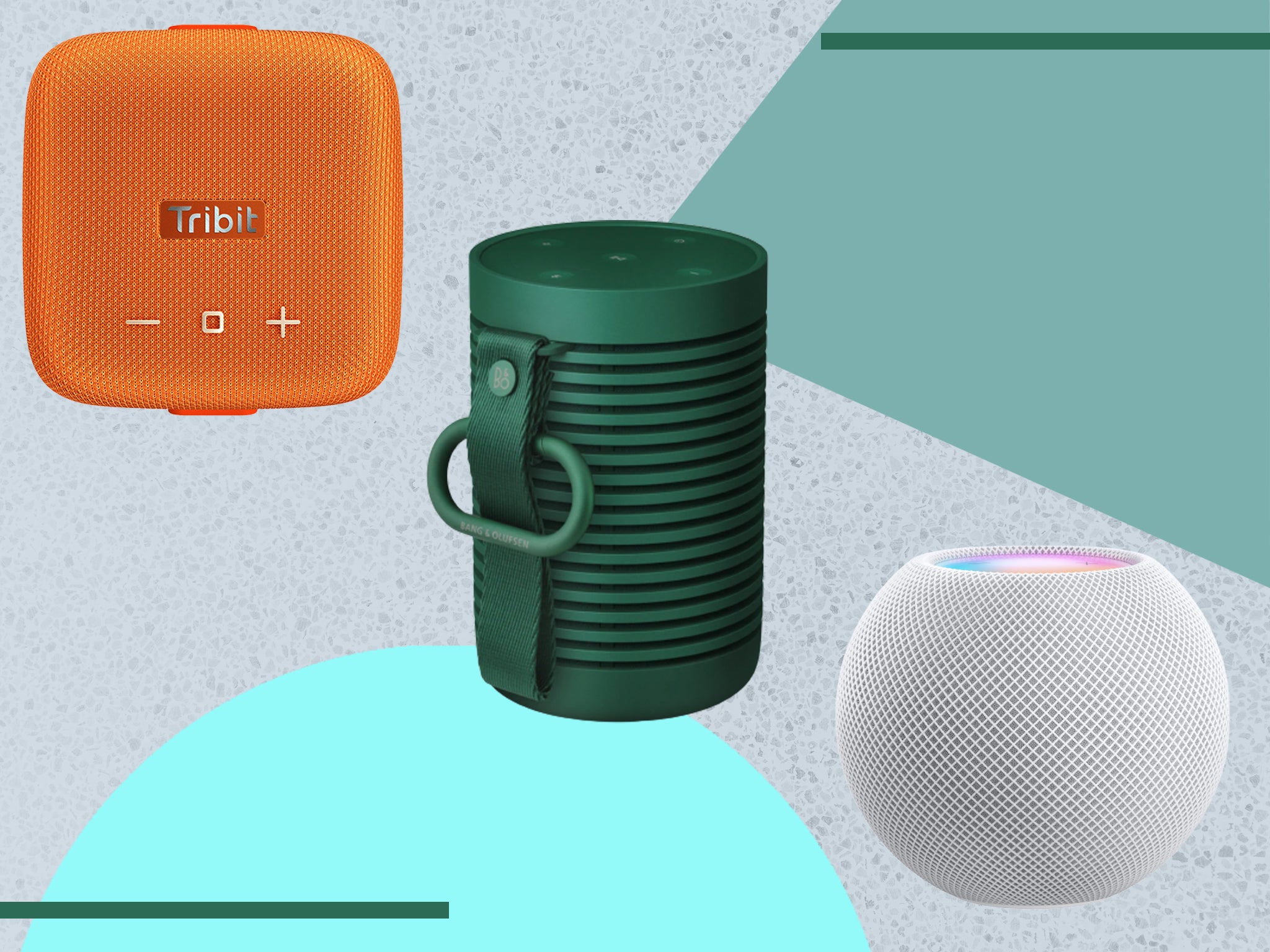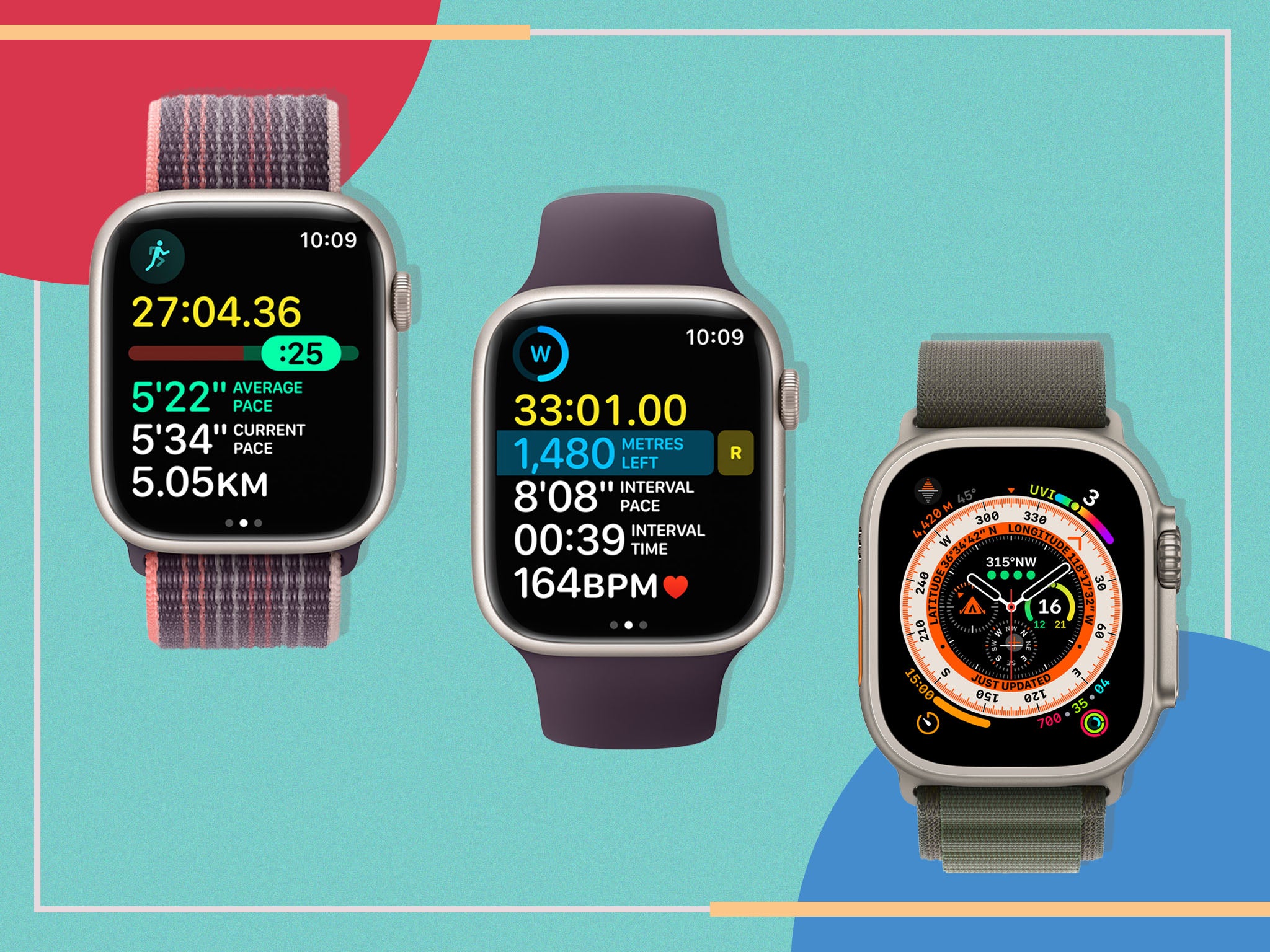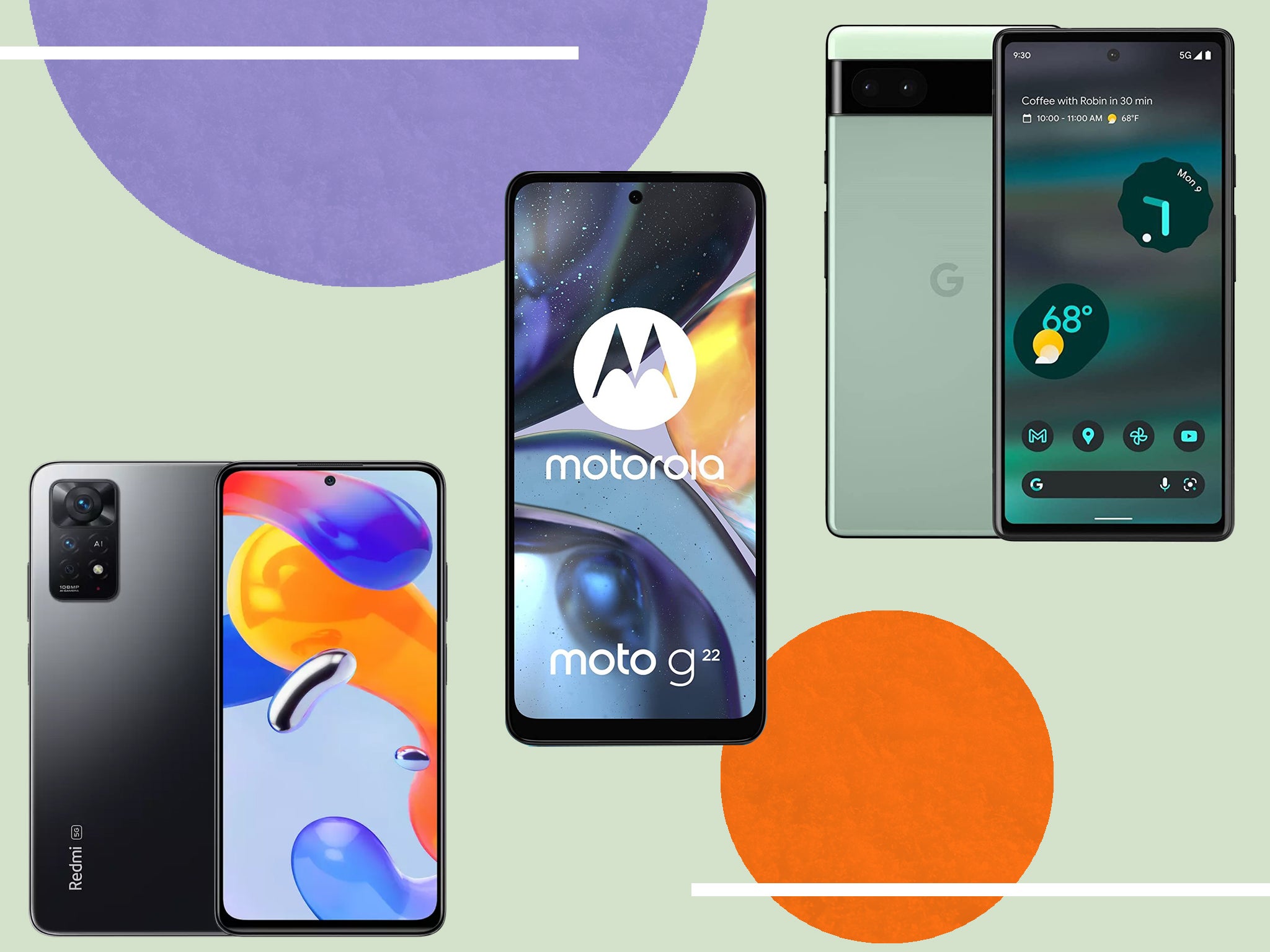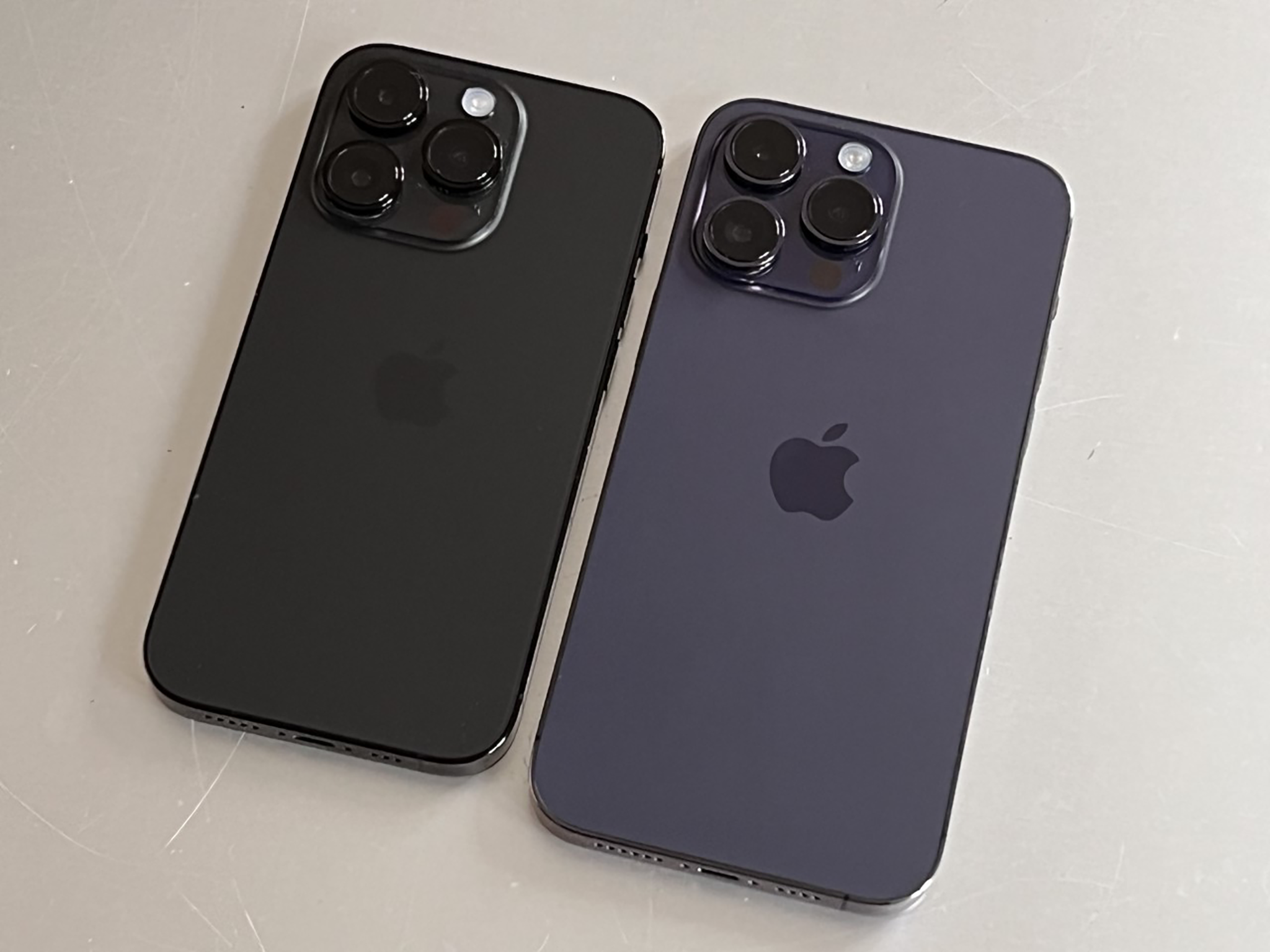Apple iPhone 14 pro
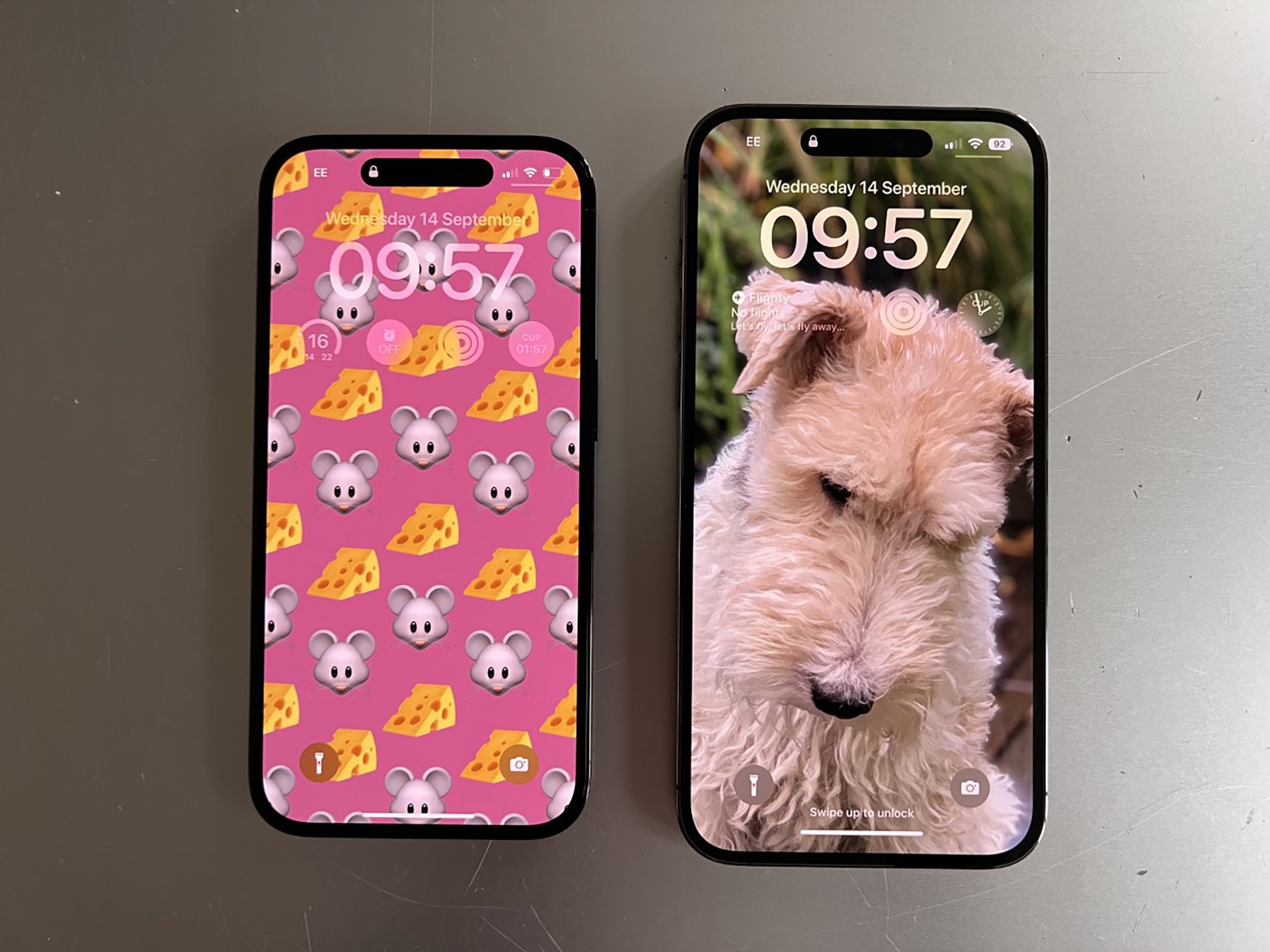
- Screen: 6.1in OLED display
- Processor: Apple A16 bionic chip
- Storage: 128GB, 256GB, 512GB, 1TB
- Dimensions: W 71.5mm x H 147.5mm x D 7.85mm
- Weight: 206g
- Rear camera: Wide 48MP, ultra-wide 12MP, telephoto 12MP
- Front camera: 12MP
- Colours: Space black, gold, silver, deep purple
The first thing you notice when you look at the new iPhone 14 pro (pictured on the left here, next to the larger iPhone 14 pro max) is that the cut-out has shrunk. Gone is the solid block with no touchscreen, in comes a sleek, slim lozenge of black. The cut-out, commonly called the notch, is necessary because it’s where the front-facing camera and the true depth camera sit. These are what power the facial recognition system and enable selfies.
But as well as shrinking the cut-out, Apple has made a virtue of it with software called ‘Dynamic Island’, of which more below (spoiler: it’s sensational).
The phone itself, at first glance, looks similar to the iPhone 13 pro. The big difference is apparent when you turn the phone over. The cameras have been improved with bigger lenses that protrude even further from the back. The new phone is very slightly taller than the iPhone 13 pro/pro max it replaces, a whisker thicker and a touch wider. In hand, you can’t tell the difference.
Read more: Which iPhone should I buy? Comparing Apple’s best phones, from the 13 to the SE
There are new colours this year: gold and silver are slightly tweaked, but the dark-grey version, called graphite last year, is replaced with the darker space black. Plus there’s an all-new shade called deep purple. In some lights, this just looks grey, which is nice enough, but catch it just right and it almost glows. The matte-finish back is complemented by the glossy camera panel, which is unmissably purple, and the stainless-steel edging glows with an understated mauve tinge. It looks tremendous.
Display and lock screen
Other brands have had always-on displays but, oh boy, this one was worth the wait. It is by a country mile the best always-on screen yet. Rival versions show the time, the date, and perhaps indicators of recent notifications. Sometimes there might even be a small, colourful animated character (Huawei is terrific at this). But this is something completely different.
Instead of a black screen with some small illuminations, this is the real deal, quietly illuminating the whole screen. Whether you choose one of your favourite photographs or an Apple wallpaper, the image remains on screen when the display is off, in muted colours but easily recognisable. Apple has new fonts for the digital clock, which shine out bright and clear. The quickest glance, without the slightest touch, tells you the time. And all without noticeable impact on the phone’s battery life.
Dynamic Island
This is the first software upgrade in years – perhaps since the dawn of pinch-to-zoom on the first iPhone – that has seemed as important as a hardware upgrade.
Display cut-outs have been common on smartphones since the iPhone X, but nobody has thought of making a virtue of the dead screen until now.
When you do one of a whole list of things, the lozenge of black where the cameras sit becomes something bigger. Turn the phone’s silent mode on or off, connect your AirPods, unlock your Apple Watch or do one of a dozen activities and the cut-out responds so elegantly that it’s hard to know where the cut-out finishes and the display begins.
Read more: Apple’s iPhone SE is astonishingly fast, affordable and way ahead of its rivals
It grows to a large square to confirm face ID is working or widens to show album art when you’re listening to Apple Music or Spotify. When you’re playing music and swipe the app off screen, the Dynamic Island widens to show album art. Touch it and the app reappears on screen. Want to add a timer? That shows up in a separate spot alongside.
And although much of the area is made up of lenses, even if you tap the camera rather than the touchscreen, it still springs into life almost magically.
It’s an exciting and impressive visual indicator that catches your eye and enhances how you use your iPhone. Oh, and it distracts from the fact there’s a bit of the display that’s not a display, in the most elegant way.
Cameras
The new cameras are significantly improved this time around, and not just because of the 48MP sensor for the wide camera. In most cases, the iPhone combines four adjacent pixels, so they can work as one bigger site to draw in more light quickly, for better images in all lighting conditions. This is a process normally called pixel binning, though Apple calls it quad pixels.
There are three lenses, but this iPhone promises four zoom levels. Digital zoom, which is essentially cropping to zoom in, is not what you want, as it reduces resolution. However, Apple has cunningly realised that if you crop into the central part of the 48MP sensor, that is, the middle 12 megapixels, you can legitimately claim that the extra zoom level is a full 12MP image. Of course, there’s no pixel binning in this case.
Read more: The Apple iPhone 13 and iPhone 13 mini have blazing-fast performance and immaculate design
The results across this camera are routinely stunning, even in low light, and make you wish Apple had jumped to a 48MP sensor years ago, although it, without doubt, needed the latest processor to work as well as it does. You can even shoot in ProRAW and choose to record full 48MP images, though, be warned, the files are huge, often 75MB or more, so they can fill up your phone storage fast. And shooting ProRAW at full 48MP resolution takes time to process, so expect a second or so pause between shots.
New features
Crash detection, also found on the iPhone 14 and iPhone 14 plus, may literally turn out to be a lifesaver. The improved accelerometer spots when you’re in a car crash and can alert emergency services. It’s the feature we hope none of us ever have to use, and you’ll understand, dear reader, that I haven’t tested it.
There’s another cool new extra feature: emergency satellite connection, which means that if you find yourself in trouble in a place with no network coverage, you can point your iPhone at the sky to send short messages by satellite to the emergency services. Clever software means you can know where to aim the phone. It will work in the USA and Canada from November but I’m sure it will come to the UK in due course. Although it’s not something you would use every day, it’s another feature that adds peace of mind.
Performance
The non-pro iPhone 14, in a break with tradition, has a less powerful processor than these handsets. The iPhone 14 takes the souped-up A15 bionic processor originally found in the iPhone 13 pro. Here, though, is the A16 bionic, the first Apple chip using a four-nanometer process, which basically allows for more transistors, greater efficiency and faster performance overall.
The phone is extremely fast and responsive, with apps opening super-fast, video playing smoothly, games rendering detailed graphics and the camera is instantaneous, 48MP shots apart.
Battery life remains as good as last year’s models – easily enough for a full day, even with the always-on screen.



